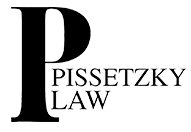Sixth Amendment Rights
The Sixth Amendment gives every one of us “the right to a speedy and public trial, by an impartial jury of the State and district wherein the crime shall have been committed...”. If you’ve seen an episode of Law & Order, or any other legal show, you’re probably familiar with your Sixth Amendment right to a jury trial. But what does this right really entail –How many people sit on the jury? How are they selected? Do they all have to agree? The answers to these questions are more complex than Law & Order makes it seem.
Beginning with the right to a speedy trial. In Illinois, if you are denied bond and remain in custody, the prosecution must bring your case to trial within 120 days from the date you were arrested. If you are released on bond, the prosecutor has 160 days to bring the case to trial. This clock does not begin to tick, however, until your attorney files a written request demanding trial.
An experienced attorney knows that, except in extremely rare cases, it does not make sense to demand trial without having all the discovery, i.e. police reports, grand jury testimony, body camera videos, etc. Unfortunately, it can take the prosecution months to provide every piece of discovery and the judge will continue your case until all discovery is given. Nearly every continuance date before discovery is complete is by agreement between your lawyer and the prosecutor. When the continuance is “by agreement”, the time does not count towards the 120 or 160 days.
On the other hand, if you confer with your lawyer and agree that it might be a good tactic to demand trial, every day after that demand counts against the prosecutor and in favor of the 120 or 160 days. If the prosecution cannot get its case ready and have all the witnesses ready for trial within the 120/160 days of the demand, your attorney should file a motion to dismiss your case because your right to a speedy trial has been violated.
When your case reaches the jury trial stage within the speedy trial time requirements, the first task is to select a jury. The process is called voir dire. Every judge has their own way of conducting voir dire, but the basics remain consistent. First, dozens of prospective jurors will be brought into the courtroom, and each prospective juror is assigned a random number. The prospective jurors must all be residents of the county where the case is being prosecuted.
The judge will then likely call 14 prospective jurors to sit in the jury box. The judge will then ask each person a series of questions –if they know the judge; the lawyers; the accused; any of the witnesses; if they have read or heard anything about the case; if they can listen to the evidence fairly and impartially; etc. The judge may allow your attorney and the prosecutor to ask the jurors questions as well. Each question is designed to determine whether the prospective juror holds any biases and could be fair.
After all questions are asked, you’ll huddle with your lawyer to decide which prospective jurors should be removed. After the huddle, your lawyer and the prosecutor will go into the judge’s chambers and argue to the judge which jurors should be removed, either “for cause” or by way of a preemptory challenge. If a prospective juror knows someone involved in your case or admits that he or she cannot be impartial, your lawyer should argue to the judge there is ‘cause’ to believe the juror will be biased and therefore should not be allowed on the jury. Each side has an unlimited amount of ‘for cause’ challenges. On the other hand, if your lawyer just has a bad feeling about one of the jurors, he can simply ask to strike the juror without giving a reason. This is called a “preemptory challenge.” Your lawyer and the prosecution are only allowed a specific number of preemptory challenges each.
At times, your lawyer might notice the prosecution is using many of its preemptory challenges to strike minority prospective jurors. This is illegal, and if it occurs your lawyer should raise a “Batson Challenge” to the judge. A “Batson Challenge” gets its name from the Supreme Court case Batson v. Kentucky, where the Supreme Court ruled that the prosecution cannot use peremptory challenges to purposefully remove jurors because of their race. In recent years, the Supreme Court has ruled Batson Challenges can also be made if one side is removing jurors based on gender or ethnic backgrounds. If the judge agrees, the judge may dismiss the entire panel of selected jurors and start selection all over or simply seat the improperly struck jurors.
The process of removing jurors continues until 12 jurors and generally, 2 alternates are selected. These 12 jurors will listen to the evidence during the trial and at the close of the case issue a verdict. The jury’s verdict must be unanimous, which means that ALL 12 jurors must agree with the verdict. Until April 2020, only 2 states, Oregon and Louisiana, allowed individuals to be convicted and sentenced to prison by non-unanimous juries. That changed when the Supreme Court overturned the ruling in Apodaca v. Oregon that allowed non-unanimous verdicts to persist. In the 2020 case of Ramos v. Louisiana, the Supreme Court ruled that it is "unmistakable" that the Sixth Amendment includes a right to a unanimous jury.
Once a jury is empaneled and sworn in, the prosecutor will present the state’s opening statement, and then your lawyer will present your opening statement. Once opening statements are done, the prosecutor will present the state’s case by calling witnesses and introducing evidence. At trial, it is the state’s burden to prove your guilt beyond a reasonable doubt. During the prosecutor’s presentation of the case to the jury, your lawyer has the right to object to improper behavior by the prosecutor and has the right to cross-examine the prosecutor’s witnesses. At the end of the state’s case, your lawyer should argue to the judge that the state did not meet its burden of proof.
If the judge denies your lawyer’s motion for a directed finding, you have the right to present evidence and witnesses. At trial, you also have the right to testify. The decision of whether to testify is yours and yours alone. You may ask your lawyer whether he/she thinks you should testify, but they can’t stop you from testifying. But remember that because the state has the burden of proof throughout the entire trial, you do not have to present evidence and witnesses or testify. In fact, the judge instructs the jury that they cannot hold it against you or find you guilty just because you did not testify at trial. The decision to present witnesses, evidence, or your testimony cannot be taken lightly. Your life depends on it, and you and your lawyer should know YOUR theory of YOUR case well BEFORE you even pick a jury.
Once the prosecution presented its case and you presented your case, the jury will listen to closing arguments. The prosecutor will present the state’s closing arguments first, your lawyer will go next, and then the prosecutor will present rebuttal arguments. Once closing arguments are done, the judge will read to the Jury Instructions, which are a set of laws that the jury must follow when they deliberate the case. After the judge read the Jury Instructions, the jurors will be taken to the jury deliberation room and will begin their deliberation. Only when all 12 jurors come to a unanimous decision they will tell the judge that they reached a verdict. In rare cases, jurors cannot reach a unanimous verdict and the judge might declare a mistrial. If a mistrial is declared, the state can take the case to trial again because it is not considered double jeopardy.
Ensuring that your various ‘Jury Trial’ rights are not being infringed upon requires the knowledge of a dedicated and experienced criminal defense attorneys. The driven lawyers at Pissetzky Law LLC have successfully taken hundreds of cases to trial and secured many not guilty jury verdicts. If you or a loved one is facing serious criminal charges do not hesitate to contact us today.


